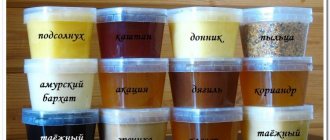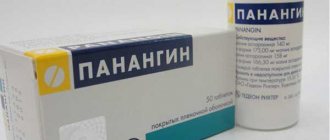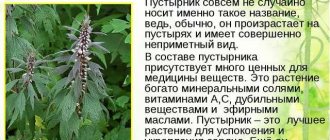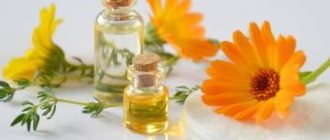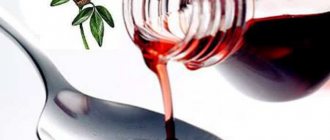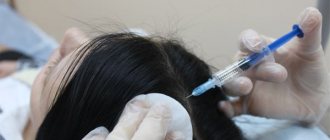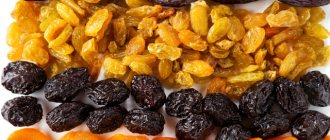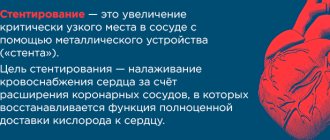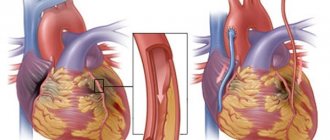As a preventive measure and additional therapy, patients with cardiovascular diseases are recommended to use alternative medicine recipes based on the therapeutic effects of herbs. Biologically active substances that are part of plants have a beneficial effect on the body; they can improve the tone of the vascular system, reduce cholesterol levels, normalize heart rate and blood circulation. What herbs exist for the heart and blood vessels and how to take them correctly in order to achieve a pronounced therapeutic effect?
Hypertension
Chokeberry (rowan) chokeberry
Berries are collected in September - October. Aronia fruits help lower blood pressure. The juice is used for vascular permeability disorders and atherosclerosis.
Aronia juice and fruits are strictly contraindicated in cases of blood clotting disorders, gastric ulcers and gastritis with high acidity.
The infusion is prepared at the rate of 2 tbsp. spoons of fruit in 2 glasses of water (daily dose). Take 3 times a day 20–30 minutes before meals.
Valerian officinalis
The roots of the plant are collected in September - October. Valerian is used for hypertension, angina pectoris, and neuroses of the cardiovascular system. The plant improves coronary circulation, regulates heart activity, and has sedative properties.
The infusion is prepared at the rate of 1 tbsp. spoon of crushed raw materials per 1 glass of water. Take 1 tbsp. spoon 3-4 times a day.
Article on the topic
For the soul and for the body. What indoor plants are good for your health?
Sweet clover
The grass is collected at the beginning of flowering. The plant lowers blood pressure and is used for cardiospasms and angina.
Preparations of sweet clover are contraindicated during pregnancy: an overdose of the plant can cause headache, nausea, and vomiting. In this case, stop taking sweet clover medications. It is advisable to use the plant in collections.
The infusion is prepared at the rate of 2 teaspoons of herbs per one and a half glasses of water. Take 3 times a day 20–30 minutes before meals.
Swamp cranberry
Use berries and cranberry juice. The berries are harvested in the fall, after ripening.
Cranberry and its juice have a diuretic effect and lower blood pressure. Berries are added to food for patients on a salt-free diet, including those with cardiovascular diseases. Cranberries are contraindicated for peptic ulcers of the stomach and duodenum.
The mashed berries are placed in cheesecloth and the juice is squeezed out. Fruit squeezes are filled with water at the rate of 100 g of fruit per ¾ liter of water; boil, filter, add the previously obtained raw juice and sugar to taste. Fruit juice is prepared for 2-3 days and stored in a cool place. The drink is useful for cardiovascular diseases.
Motherwort five-lobed
Motherwort grass is harvested when the first buds appear or at the beginning of flowering. The plant is used as an antihypertensive, has a diuretic effect, and relieves spasms. You should not use motherwort preparations if you have low blood pressure or a slow heart rate (bradycardia).
Juice take 30–40 drops per 2 tbsp. spoons of water half an hour before meals.
For hypertension, a mixture consisting of equal parts (20 g each) of motherwort herb, marsh grass, hawthorn flowers and mistletoe herb is also recommended.
The collection is poured into 0.5 liters of boiling water, infused and the strained infusion taken ¼–¹⁄3 cups 3 times a day.
Orthosiphon stamen (kidney tea)
The plant lowers blood pressure and has a diuretic effect, and the diuretic effect is accompanied by increased release of heavy metals from the body. Kidney tea is also recommended for cardiovascular insufficiency of degrees I–II.
Orthosiphon does not grow in our country, but it can be easily found in a pharmacy. Another name is “kidney tea”.
The infusion is prepared at the rate of 1 teaspoon of dry crushed leaves per glass of water. Take ½ glass 2 times a day 20–30 minutes before meals, warm. It is recommended to prepare a fresh infusion daily and take it for a long time (up to 6 months) with monthly breaks of 5–6 days.
Healing plants in the country: what do we put in the first aid kit? More details
Mountain ash
The fruits are harvested when they are fully ripe.
The plant has a diuretic effect, due to which it reduces blood pressure. Rowan berries are also recommended for the prevention of atherosclerosis.
Rowan is contraindicated if you are prone to increased blood clotting.
The infusion is prepared at the rate of 1 tbsp. spoon of dried fruits per 1.5 cups of water. Drink in 3 doses throughout the day.
Marsh dry grass
The grass is harvested from June to September by pulling out the above-ground part of the plant along with the roots and shaking it off the ground. Dry the grass along with the roots.
Sushenitsa dilates blood vessels, lowers blood pressure, and calms the nervous system.
10–15 g of herb is poured into 1 glass of boiling water, left for 2–3 hours, filtered and taken 1 tbsp. spoon 3 times a day 30 minutes before meals.
Horse sorrel
Roots are dug in spring or autumn. The grass is harvested during the flowering period of the plant.
Sorrel is useful for hypertension and atherosclerosis.
Patients predisposed to the formation of oxalate kidney stones are recommended to limit the use of horse sorrel preparations.
1 tbsp. brew a spoonful of crushed roots with a glass of boiling water, let it brew for 15–20 minutes and take 1 tbsp. spoon 3-5 times a day.
Dill fragrant
Dill fruits are harvested in the fall, when the plant and seeds turn brown.
The fruits of dill relieve spasms and lower blood pressure. Dill is contraindicated during pregnancy.
The infusion is prepared at the rate of 1 tbsp. spoon of herbs or seeds per 1.5 cups of water. Take 1-2 tbsp. spoons 4-5 times a day.
Aromatherapy and herbal teas. What will help cope with insomnia? More details
What heart diseases are treated with herbs?
Herbal medicine is often used for heart diseases. Due to problems with the functioning of the nervous system, the health of the organ can deteriorate significantly. In this case, consuming herbs that can have a calming effect on the nerves and heart is beneficial.
The use of medicinal plants is useful in the initial form of the disease. In other cases, they act as an adjunct to drug therapy prescribed by a doctor. If the disease worsens, herbal medicine can be added after the patient’s condition has been stabilized. The use of herbs can be used as a preventive measure by relatively healthy people and those with heart problems.
Cardiac ischemia
Common apricot
Apricot fruits are recommended for heart rhythm disturbances, myocardial infarction, and circulatory disorders. Apricots are limited in the diet of patients with diabetes due to the high sugar content in the fruit.
Apricot fruits, fresh and dried, are useful to include in the diet for patients with cardiovascular diseases.
Fluffy birch
Birch buds are collected in winter or early spring, when they have not yet blossomed, during the swelling period. The leaves are collected during flowering.
Birch leaves and buds are used to prevent cardiovascular diseases, including coronary heart disease. In large doses, birch bud preparations have an irritating effect on kidney tissue.
An infusion of leaves is prepared at the rate of 2 tbsp. spoons of young leaves per 0.5 liters of boiled water. Take ½ cup of infusion 3-4 times a day, 20-40 minutes before meals, warm.
An infusion of birch buds is prepared at the rate of 2 teaspoons of raw material per 1 glass of water. Take in three doses 20–40 minutes before meals.
Hawthorn
Flowers are collected in dry weather at the beginning of flowering. The fruits are collected when ripe and dried in dryers at a temperature of 55–60 °C.
Hawthorn is used for hypertension, angina pectoris, myocarditis, and cardiovascular insufficiency of degrees I–II.
An infusion of flowers and fruits is prepared at the rate of 1 tbsp. spoon of flowers or 2 tbsp. spoons of crushed fruits for 1.5 cups of water. Take during the day in three doses 30 minutes before meals.
Wild strawberry
The leaves are harvested during the flowering of the plant, dried in the attic or under a canopy. The fruits are harvested when ripe, in the morning, when the dew has dried, or in the evening.
An infusion of plant leaves slows down the rhythm and increases the amplitude of heart contractions and dilates blood vessels. Strawberry leaves and berries are used for angina pectoris, atherosclerosis, and hypertension.
An infusion of leaves is prepared at the rate of 2 tbsp. spoons of crushed leaves per 2 cups of boiled water (daily dose).
Heartfelt enemies. What to do to protect yourself from a heart attack? More details
Cheremsha
Bulbs with flower shoots and leaves are harvested in spring and early summer (May - June). The bulbs are used either fresh or fermented, salted, or pickled. Less commonly, the above-ground part of the plant is dried in the open air or in ventilated, warm rooms.
The plant is used for coronary heart disease, hypertension, and atherosclerosis. Wild garlic preparations should not be taken orally for gastritis, stomach and duodenal ulcers.
1 teaspoon of chopped onions is poured into 150 ml of cold water, infused for an hour and taken 30–50 ml of infusion 3 times a day before meals.
Schisandra chinensis
On the territory of our country, lemongrass is found in the wild only in the Primorsky Territory. The fruits are harvested as they ripen in September - October. Schisandra tincture is easy to find at the pharmacy.
Schisandra preparations stimulate the central nervous and cardiovascular systems and are used for hypotension and fatigue.
Schisandra is contraindicated for insomnia, nervous agitation, high blood pressure, and heart rhythm disturbances.
Pharmacy tincture of Schisandra fruits is prescribed 20–30 drops 2–3 times a day to treat hypotension.
The infusion is prepared at the rate of 20 g of lemongrass berries per 200 ml of water. Take 1 tbsp. spoon 2-3 times a day, warm.
What to take for cardiovascular diseases?
The list of medicinal plants used to treat heart disease and relieve its symptoms given here is far from complete.
- For arrhythmia: hawthorn, calendula, parsley, motherwort, valerian, adonis, field bindweed, smokeweed, zharnovets, jasmine, hazel, lovage, lemon balm, tricolor violet, echinacea.
- For tachycardia: chicory, hawthorn, motherwort, mint, lemon balm, lavender, passionflower. For bradycardia: hawthorn, immortelle, mint, lily of the valley, young shoots of pine.
- For sick sinus syndrome: variegated elm, elecampane, adonis, valerian, medicinal asparagus, horsetail, knotweed.
- For heart failure: hawthorn, rose hips, motherwort, dill, lemon balm, fennel, Japanese sophora.
- After myocardial infarction: hawthorn, rosehip, Dioscorea Caucasica, Ginkgo biloba, Sophora japonica, Adonis vernacular, gray jaundice.
- For angina pectoris: hawthorn, motherwort, rose hips, valerian, cudweed, astragalus.
- For ischemia: hawthorn, motherwort, peppermint, fennel, rose hips, chamomile; lemon balm, valerian, horsetail, eleutherococcus.
- For pain in the heart: hawthorn, mint, valerian, lily of the valley, lemon balm, adonis, elecampane, wood lice, blue cornflower, yarrow.
- For cardiac edema: mint, hawthorn, parsley, calendula, horsetail, cornflower, birch buds, viburnum, lingonberry, knotweed, horse chestnut, flaxseed, burdock, plantain, nettle, rose hips, St. John's wort, oregano, bearberry.
- For cardiac shortness of breath: calendula, hawthorn, motherwort, lemon balm, lovage, celandine, wormwood, adonis, elderberry, sundew, plantain, tricolor violet, blackberry.
- For extrasystole: hawthorn, calendula, valerian, zyuznik, cornflower.
Important! When making teas, infusions, decoctions, alcoholic tinctures or concentrated juice from hearty herbs, you must adhere to the recipe and strictly adhere to the recommended dosage.
Hypotension
Ginseng
The plant is listed in the Red Book, so you won’t be able to prepare it yourself. However, ginseng preparations are easy to buy at the pharmacy.
Ginseng tones the central nervous and cardiovascular systems of the body. These properties of the plant make it possible to recommend it for weakness, low blood pressure, and to improve mental and physical performance.
Ginseng preparations are not recommended for use in case of hypertension, heart rhythm disturbances with attacks of tachycardia, children under 16 years of age, or during the summer heat.
Ginseng powder is prepared from the dried root and taken 0.25–0.5–1.0 g 2–3 times a day 30 minutes before meals (it is recommended to take small doses at first and then gradually increase them).
The tincture is prepared with 50–60% alcohol in a ratio of 1:10; take 5-20 drops 2-3 times a day before meals.
Monitor blood pressure. Why do hypertensive patients need to keep a diary? Read more
Zamanikha high
The plant is listed in the Red Book, so use a pharmacy tincture.
Zamanika drugs stimulate the central nervous system, increase blood pressure, and lower blood sugar levels. The plant is contraindicated for hypertension.
The tincture is taken 30–40 drops 2–3 times a day before meals. The course of treatment is 1–2 months (it is advisable not to take the drug in the afternoon).
Schisandra chinensis
On the territory of our country, lemongrass is found in the wild only in the Primorsky Territory. The fruits are harvested as they ripen in September - October. Schisandra tincture is easy to find at the pharmacy.
Schisandra preparations stimulate the central nervous and cardiovascular systems and are used for hypotension and fatigue.
Schisandra is contraindicated for insomnia, nervous agitation, high blood pressure, and heart rhythm disturbances.
Pharmacy tincture of Schisandra fruits is prescribed 20–30 drops 2–3 times a day to treat hypotension.
The infusion is prepared at the rate of 20 g of lemongrass berries per 200 ml of water. Take 1 tbsp. spoon 2-3 times a day, warm.
Article on the topic
“The living is treated by the living!” How to use herbs growing in the garden
Rhodiola rosea
The plant is very rare, so only pharmaceutical preparations are used.
Rhodiola is recommended for patients with arterial hypotension who have had infectious diseases. Rhodiola rosea preparations stimulate the central nervous system and improve brain function.
Rhodiola is contraindicated in hypertensive crises, feverish and excited states, and convulsions.
5-10 drops of pharmaceutical extract are diluted in ¼ glass of water and taken 2-3 times a day 15-30 minutes before meals. The course of treatment is 10–20 days.
Eleutherococcus senticosus
In the wild, Eleutherococcus is found in the Far East and the North Caucasus; in addition, the plant is cultivated.
The roots are harvested in the fall, starting in the second half of September.
Eleutherococcus is used for hypotension, fatigue, atherosclerosis, and vegetative-vascular dystonia. The plant is contraindicated for high blood pressure and infectious diseases.
In pharmacies you can buy eleutherococcus in the form of a liquid extract. It is taken for hypotension, 15–30 drops 2–3 times a day before meals (the dose is selected individually).
Contraindications
Despite the recognized effectiveness of herbal remedies, they should be used with caution. There are contraindications for the use of some herbs:
- Immortelle helps increase blood pressure, so you should not use it for a long time if you have hypertension. It is used with caution for thrombophlebitis.
- Valerian root can depress the functioning of the digestive system and often causes problems with the heart.
- St. John's wort - if consumed excessively, can cause harm to the body, since it is a poisonous plant.
- Preparations based on lily of the valley cannot be used for acute myocardium, endocarditis, or cardiosclerosis.
- Chinese lemongrass should not be consumed if you have high blood pressure; it is extremely undesirable if you have problems with the cardiovascular system.
- Onion tincture – not suitable if you have kidney failure.
- Products containing fern should not be taken for pathological conditions or heart failure.
To avoid the development of complications and side effects, treatment of cardiovascular diseases using herbal infusions and decoctions must be carried out under the supervision of a physician.
Atherosclerosis
Common corn
Corn stalks with silks (hair-like parts of the plant located around the cob) are used. Harvested in the stage of milky ripeness of the cobs (usually in August).
Corn silk is used for atherosclerosis, to reduce the level of bad cholesterol in the blood. Stigmas normalize metabolism, reduce blood sugar levels, and are prescribed for obesity as an appetite suppressant.
Infusion of corn silk is contraindicated in case of decreased appetite, low body weight, as well as increased blood clotting.
The infusion is prepared at the rate of 2–3 tbsp. spoons of stigmas in 2 glasses of water (daily dose). Take in three doses 30 minutes before meals.
Japanese kelp
The use of seaweed is mainly due to the content of organic iodine compounds in it, which reduces blood viscosity, cholesterol levels in the blood, delays the development of atherosclerosis, lowers vascular tone and blood pressure.
Seaweed is contraindicated during pregnancy, chronic skin diseases, and furunculosis.
Take 1 teaspoon of kelp powder with water 3-4 times a day for atherosclerosis.
Don't be afraid of fat. How to eat to get rid of atherosclerosis? More details
Sea buckthorn
The berries are collected during their ripening period.
Berries and buckthorn oil reduce the level of harmful cholesterol in the blood, have a positive effect on fat metabolism in the liver, as well as on degenerative processes in the myocardium. Sea buckthorn oil is contraindicated for patients with acute cholecystitis and pancreatic diseases.
Jam, sea buckthorn fruit drinks, as well as fresh pureed fruits are recommended for people with high levels of bad cholesterol in the blood to prevent atherosclerosis.
Black currant
The leaves are harvested during flowering, the berries are collected after ripening in dry weather.
Leaves and berries reduce the level of harmful cholesterol in the blood, normalize blood pressure, strengthen the walls of blood vessels and the myocardium, and eliminate heart rhythm disturbances.
An infusion of leaves or fruits is prepared at the rate of 2–3 tbsp. spoons of crushed plant material into 2 cups of boiled water. Take ½ glass orally 3 times a day.
Common pumpkin
Pumpkin pulp is included in the diet for heart disease and atherosclerosis. The plant has a diuretic effect and is used for edema of cardiovascular origin. Pumpkin seeds are also useful for atherosclerosis; they reduce the level of bad cholesterol in the blood.
As a diuretic to lower blood pressure, pour 20 g of fresh pumpkin cuttings into two glasses of boiling water, leave until cool and take half a glass 4 times a day.
Article on the topic
Pharmacy under your feet. What medicinal herbs should be collected in summer?
Classification of plants by mechanism of action
To achieve the necessary therapeutic effect, you should choose a plant that affects the main symptoms of the pathology:
You can also read: Clover tincture with vodka for vessels
- Vasodilating and antispasmodic effect. Hypertension is accompanied by vasospasm, so taking plants from this group will help expand their lumen (parsnip, mint, hawthorn, fennel, knotweed, anise).
- Anticoagulant and antisclerotic effect. There is a decrease in cholesterol levels and the formation of blood clots (dandelion root, burdock, wild garlic, clover, mistletoe, millennial).
- Sedative effect. In addition to the calming effect, herbs have a beneficial effect on vascular tone, increasing the elasticity of blood vessels (motherwort, mint, valerian, sweet clover, chokeberry, hawthorn, meadowsweet).
- Soporific effect. If pain in the heart is provoked by acute or chronic stress, it is recommended to use herbal infusions that eliminate stimulation of the nervous system (chamomile, lemon balm, passionflower, St. John's wort).
- Hypotensive antiarrhythmic effect. Used for diseases that are accompanied by rhythm disturbances. They also improve blood circulation and reduce blood pressure (violet, ziziphora, adonis, smokeweed, hawthorn, parsley, pansy).
Quite common plants, such as lavender, can have a complex healing effect
The provided list of medicinal plants should be used as special phytotherapeutic preparations. Before starting to use folk recipes based on them, you should consult with your doctor, since each herb has both beneficial properties and contraindications.
We collect
In order for medicinal herbs to bring maximum benefit, it is necessary to follow the rules for collecting and drying plants.
Plants should be collected in dry weather, at the time of year when they contain the greatest amount of biologically active substances: herbs, flowers, leaves - at the beginning of flowering; roots, rhizomes - in spring or autumn; fruits and seeds - during their full ripening.
Leaves . Collected by hand. The color of collected and dried leaves should be green. Do not use leaves that are yellowed, blackened, or damaged by insects or disease.
Herbs . Collected by cutting with knives, sickles or pruners. The height of the cut part should not exceed 30–50 cm. Plants with thick stems are threshed, after which the stems are thrown away.
Fruits and seeds . If they fall off easily, the above-ground part of the plants is cut off along with the fruits, tied into sheaves and dried by hanging them in a room or dryer. The plants are then threshed and the fruits are sifted out.
Roots . The dug up raw materials are shaken off, cleared of soil, washed in running cold water, then the above-ground parts are cut off, and if necessary, the thin lateral roots.
Bark . Harvested in early spring. It is removed from young chopped or cut branches; for this, circular cuts are made with a sharp knife at a distance of 25–50 cm from one another, they are connected with one or two longitudinal cuts, after which the bark is removed in the form of gutters or tubes. Bark is not harvested from branches affected by lichens or with growths.
Kidneys . The buds are cut from the branches at the very base with a sharp knife. Sometimes the entire branch is cut off and the buds are separated after drying.
From drinks to cosmetics. An expert on how to collect and use herbs Read more
Sedative herbs
For cardiac and vascular pathologies, sedative herbs are recommended in the form of dietary supplements, which are available in the ready-made Leovit collection. Taking the drug can reduce the excitability of the nervous system, but the duration of use should be at least one month.
Dietary supplement, which includes a complex of sedative plants
The drug contains medicinal herbs that have the following properties:
- Motherwort (spasmolytic, calming effect).
- Melissa officinalis (painkiller, sedative effect).
- Valerian officinalis (improves blood circulation in the myocardium).
- Coriander (has antispasmodic properties).
- Hawthorn (improves heart activity).
Regular use of the drug helps stabilize blood pressure, restore heart rhythm, and eliminate pain in the heart area.
Cooking
Infusions are prepared from dried and crushed parts of plants. The required amount of raw materials is placed in an enamel or porcelain bowl, filled with boiled or distilled water and brought to a boil. Boil over low heat for no more than 10–15 minutes, infuse for at least 45 minutes until completely cooled, then filter, and squeeze out the remaining plant mass and add water until the required volume of infusion is obtained.
A more convenient way to prepare the infusion using a thermos: 1–2 tbsp. spoons of raw materials are poured into a thermos in the evening, poured with two glasses of boiling water and left overnight. The next day, take the strained infusion in 3-4 warm doses. The infusion is stored in a thermos for no more than a day.
Juices are obtained using a grater, meat grinder or juicer from fresh plants. The resulting pulp is squeezed out through a piece of thick cloth, the remainder is mixed with a small amount of water and squeezed out again. You can store the juice of a fresh plant by adding 20% alcohol as a preservative.
Powders – plant powders are dried plant parts crushed in a mortar. After grinding, the plant material is sifted.
Traditional medicine methods for heart pain
Traditional medicine often uses not only herbs for heart pain, but also their components: roots, flowers, fruits of plants. Medicines can be manufactured in various forms:
- Tinctures have an alcohol or water-alcohol base. For preparation use 40% or 70% ethanol. The plant material is infused for several days and filtered. Dosed in drops.
- The collections include several types of dried plants in a crushed state.
- Infusions and decoctions are aqueous extracts from one or a collection of several medicinal plants.
- Syrup is the preparation of plant materials in a thick sugar solution.
- Extracts are concentrated extracts from plants; they can be dry, liquid, or thick.
Most often in folk medicine, alcohol tinctures, mixtures and infusions or decoctions prepared from them are used. Usually these medicines are taken orally, but can also be used for baths (to relieve nervous tension, relax, eliminate vascular spasms).
We apply
The duration of the herbal treatment course ranges from 25–30 days to several months. After 4–5 weeks of taking herbal medicines, take a break in treatment for 7–14 days. To avoid addiction and a decrease in therapeutic activity, it is recommended to periodically change the composition of medicinal preparations, that is, introduce or exclude certain plants from it.
8 plants that will cleanse the body of germs. Infographics Read more
Lifestyle
Diet for heart patients
Can
- Vegetables and fruits . You need at least 5 servings per day. A serving is one apple or a cup of green salad. This is the amount of vegetables and fruits needed to maintain normal cholesterol levels.
- Milk and dairy products . They provide easily digestible proteins.
- Lean meat . Also provides protein needs.
- Fish . You can choose fish of any fat content (after all, fish oil contains omega-3 acids, which are necessary for the prevention of atherosclerosis), but avoid salty fish snacks.
- Soups . It is better to choose ones that are not too rich.
- Dried fruits and nuts . Dried apricots are especially good. It contains a lot of potassium, which supports the health of the heart muscle.
- Vegetable oil . The most beneficial for hearts is flaxseed; it is a rich source of omega-3 acids.
It is forbidden
- Everything is salty - salt retains fluid in the body and leads to increased blood pressure.
- Fried and spicy foods increase heart rate.
- Fatty meats can cause increased levels of bad cholesterol in the blood.
- Butter and margarine also disrupt cholesterol metabolism.
- Smoked meats and sausages – they contain too much salt and fat.
- Chocolate, strong tea, coffee and cocoa increase heart rate and blood pressure.
- Butter and margarine . Butter leads to an increase in the level of bad cholesterol in the blood; margarine also increases the risk of developing atherosclerosis and increases the likelihood of type 2 diabetes.
Beneficial properties of the tincture mixture
A cocktail of tinctures has a lot of useful properties:
- Brings blood pressure back to normal.
- Calms.
- Relieves cramps and spasms of blood vessels.
- Effectively fights varicose veins.
- Eliminates congestion in the veins.
- Helps improve blood circulation in the brain.
- Prevents the development of blood clots in blood vessels.
- Enhances hematopoiesis.
- Serves as a preventive measure against tumors.
The use of a mixture of herbal tinctures to strengthen blood vessels and the heart with Corvalol helps patients calm down, fall asleep in case of insomnia, relieve stress, and overcome nervous overexcitation. The composition regulates the tone of the heart muscle, can strengthen the vascular system and lower blood pressure, improves blood supply to the brain, and prevents the formation of blood clots. The remedy is recommended after nervous experiences and stress, during the rehabilitation period after heart surgery, strokes, heart attacks, with frequent shortness of breath, hypertension.
The benefits of a mixture of herbal tinctures for the heart and blood vessels are due to the fact that it consists of useful ingredients, which individually have an excellent calming effect on the body. Therefore, their complex gives an enhanced effect.
Play some sports
To maintain a healthy heart and blood vessels, you need to exercise at least 30 minutes a day, 5 times a week. The optimal load is considered to be 300 minutes of exercise per week. However, this does not mean that you have to become a real athlete. Brisk walking can be used as physical activity. At the same time, a person should not have any unpleasant sensations: pounding in the temples, shortness of breath, too strong heartbeat. A simple test: while walking briskly, you should be able to carry on a conversation with your interlocutor.
Swimming, cycling, dancing, hiking, and playing outdoor games will also be a good workout.
Don't be fools! How to make your own medicine from berries, herbs and mushrooms Read more
5 Ingredient Heart Blend
This unique mixture of five different herbal tinctures has long been a proven remedy for various vascular and heart ailments.
This multi-component heart tincture contains five single-component herbal tinctures:
Sometimes you can also see a sixth ingredient in some recipes - Corvalol.
This heart mixture of five tinctures is good for the heart and nerves, as it has a sedative effect. It helps relieve insomnia, reduce the effects of stress, lowers blood pressure, helps increase blood flow to the brain, and also prevents blood clots.
The medicine is also used as one of the components of rehabilitation therapy after a stroke, heart attack, hypertension and tachycardia.
Sometimes mint can be replaced with Corvalol, since the latter contains a high content of menthol base, which is more effective compared to regular mint.
Watch yourself!
- Monitor your blood pressure . It should not be higher than 140/90. Even though blood pressure increases with age, it should still remain within these values.
- Do not smoke . According to statistics from the World Health Organization, smoking is the most common risk factor for cardiovascular diseases.
- Don't abuse alcohol . A heart-safe dose of alcohol is drinking 50 ml of strong alcohol or 200 ml of wine daily.
Summer rules
People with cardiovascular diseases need to be especially careful in the summer heat - the heat can aggravate the course of the disease.
- Avoid physical activity.
- Don't go outside during hot hours , or at least wear a hat.
- Drink more . Even if your doctor recommended that you limit your fluid intake on normal days, you shouldn’t do this during hot weather.
- Always carry medications prescribed by your doctor with you.
- Avoid large crowds . Stuffiness can cause increased blood pressure and interfere with heart function. And in hypotensive people, lack of oxygen often leads to fainting.
- Sudden changes in temperature are also contraindicated for you. So you shouldn’t take an ice-cold shower after returning from a hot street.
- Don't drink alcohol on hot days . It increases the load on the heart.
Motherwort
The biologically active components contained in motherwort herb help expand the lumen of blood vessels and eliminate spasm of smooth muscles. Taking medicinal products based on it is indicated for cardiomyopathy, vegetative-vascular dystonia, and in the initial stages of heart failure.
Motherwort has a pronounced sedative effect
Herbal remedies based on motherwort have the following effects:
- normalize blood pressure;
- improve myocardial contractility;
- restore heart rhythm;
- reduce pain in the heart area.
Preparing a soothing infusion:
- 1 tsp. crushed motherwort, pour 150 ml of boiling water. Leave for 20 minutes. Drink ¼ cup several times a day.
The hypotensive effect of cardiac herb can cause an attack of dizziness, headache, weakness in patients with arterial hypotension and bradycardia. Therefore, during the treatment period it is necessary to constantly monitor blood pressure and pulse rate.
